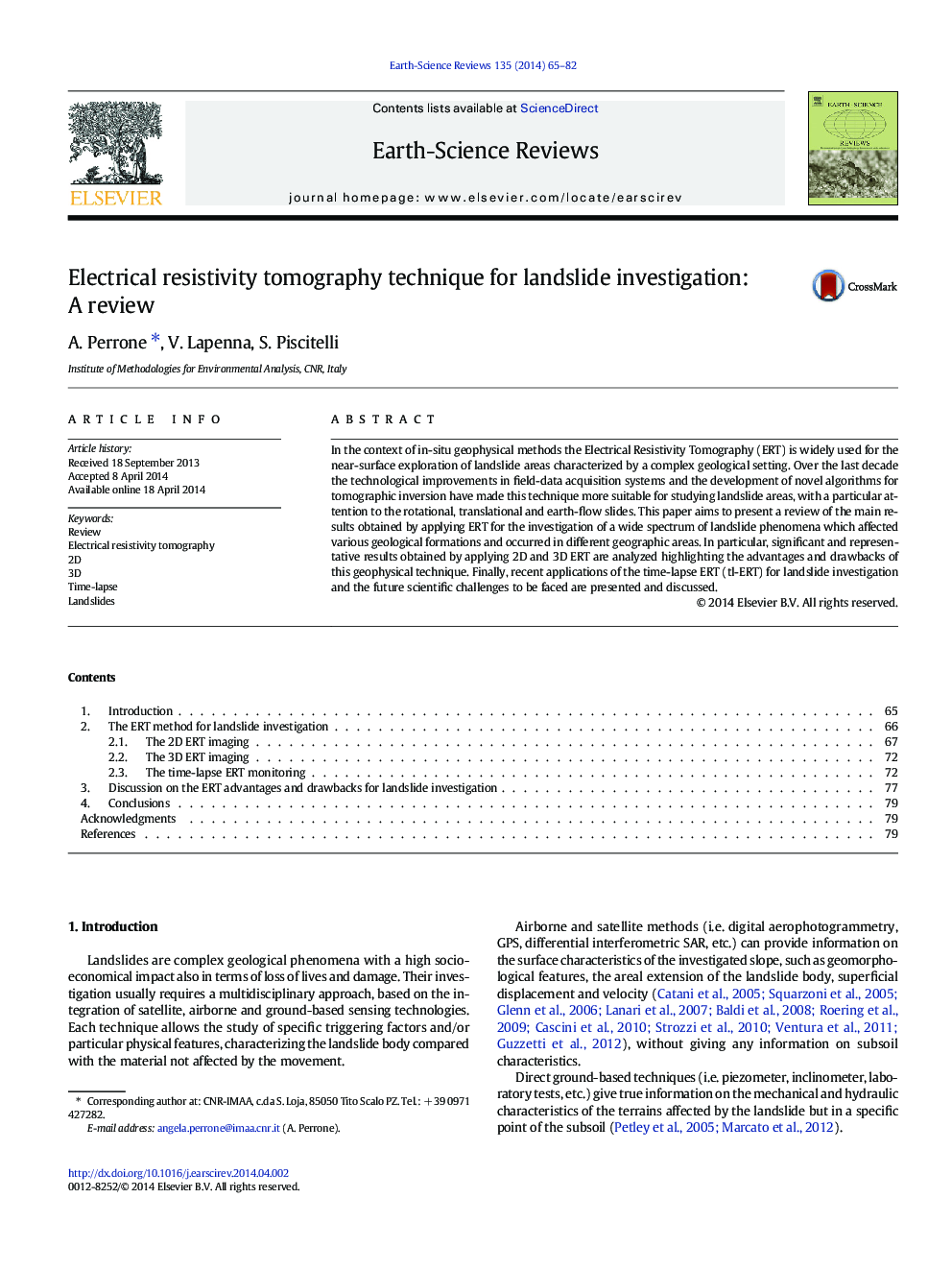| Article ID | Journal | Published Year | Pages | File Type |
|---|---|---|---|---|
| 4725733 | Earth-Science Reviews | 2014 | 18 Pages |
In the context of in-situ geophysical methods the Electrical Resistivity Tomography (ERT) is widely used for the near-surface exploration of landslide areas characterized by a complex geological setting. Over the last decade the technological improvements in field-data acquisition systems and the development of novel algorithms for tomographic inversion have made this technique more suitable for studying landslide areas, with a particular attention to the rotational, translational and earth-flow slides. This paper aims to present a review of the main results obtained by applying ERT for the investigation of a wide spectrum of landslide phenomena which affected various geological formations and occurred in different geographic areas. In particular, significant and representative results obtained by applying 2D and 3D ERT are analyzed highlighting the advantages and drawbacks of this geophysical technique. Finally, recent applications of the time-lapse ERT (tl-ERT) for landslide investigation and the future scientific challenges to be faced are presented and discussed.
